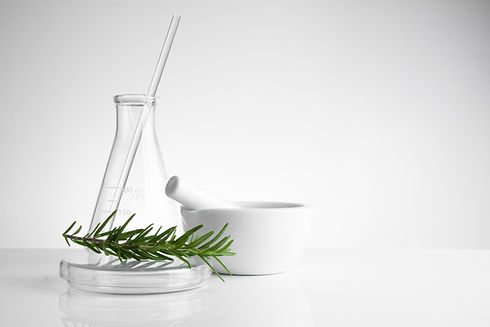
Ingredients
The guaranteed analysis tells you how much of certain nutrients are in the feed. The ingredients list tells you where those nutrients came from. The order of the list is important. It should be in order of amount used, by weight, in the feed from highest to lowest. The first ingredient in the list should be the largest component in the feed formulation. Most of the commercial feeds that I have run across have around 40 ingredients. I have seen feeds with over 70 ingredients and one vitamin and mineral supplement with over 300 ingredients.
Histogram of number equine feed products in my database by number of ingredients.
There are hundreds of ingredients. The AAFCO Official Publication provides a list of recognized ingredients, though manufacturers can include ingredients not on that list, but those ingredients must be identified as not an AAFCO accepted ingredient. So, what are the ingredients and what do those ingredients do?
I have grouped ingredients into six categories based on source of ingredient and intended use. Clicking on the underlined heading for each group will take you to detailed lists of ingredients within that grouping.
Forages and roughages include hays, seed hulls, pulps and pomaces. Hays may include grass hays such as Orchard and Timothy; legume hay such as alfalfa; and cereal grain hays such as oat and soybean hay. The hallmark characteristic of forages and roughages is a high fiber content. Digestible energy value is derived from enzymatic digestion of simple sugars, starches, and microbial fermentation of structural carbohydrates (fiber) (NRC. (2009). Nutrient Requirements of Horses. (6th Ed.) National Academy Press, Washington D.C.).

This category includes cereal grains and by-products of grain processing. Barley, corn (maize), oats, and wheat are common grain ingredients. Grains may be cracked, expanded, flaked, ground or rolled. By-products include grain bran, germ, gluten and four. Digestible energy is largely from enzymatic digestion of starch content.

Oils add energy to a feed formulation, and can be used as a substitute for starches and sugars from grains (NRC. (2009). Nutrient Requirements of Horses. (6th Ed.) National Academy Press, Washington D.C.). Oil seeds and seed by-products are an important source of plant proteins. Common oil seeds are soybean, flaxseed/linseed, rapeseed (canola), cottonseed and sunflower seeds.

Vitamin, mineral and amino acids can be added to feed formulations to compensate for inadequate levels of these micronutrients in the other ingredients or to bolster the content for the intended use of the feed. As nutrients these substances are necessary for the proper functioning of the animal.
Common vitamin additives are ascorbic acid, niacin, pantothenic acid, riboflavin, alpha-tocopherol
Common mineral ingredients include calcium, phosphorus, sodium, copper, cobalt, iron, magnesium
Common amino acid supplements are oil seed meals, gluten, lysine, methionine, threonine

The addition of live microorganisms (probiotics), food substrates for microorganism (prebiotics) or the fermentation products of microorganism is intended to allow the host animal in more fully digesting feedstuffs. Manufacturers also add herbal extracts (botanicals) from various parts of plants as well as joint supplements.
These ingredients are grouped together largely because they are debatable in their efficacy. Moreover, if ingredients are presented as preventing or treating a disease, or altering body structure, function or performance they would be classified as a drug and would require FDA evaluation (1). It would seem to me that this area is one in which the perceptions or personal habits of consumers, not science, is the driving force.
Common microbial ingredients are: yeast culture, fermentation extracts, fermentation products
Common botanical ingredients are: aloe vera extract, turmeric, and yucca schidigera extract
Common joint supplements include: chondroitin sulfate, glucosamine hydrochloride, MSM
NRC. (2009). . (6th Ed.) National Academy Press, Washington D.C.

These ingredients are used to enhance the visual appeal to the owner and taste palatability of the horse.
There are ingredients, usually with a chemical name, that are added in the formulation to facilitate the production process and preserve the quality of the feed for longer shelf life.
Pellet forming aids
Processing aids
Preservatives
Humectants
